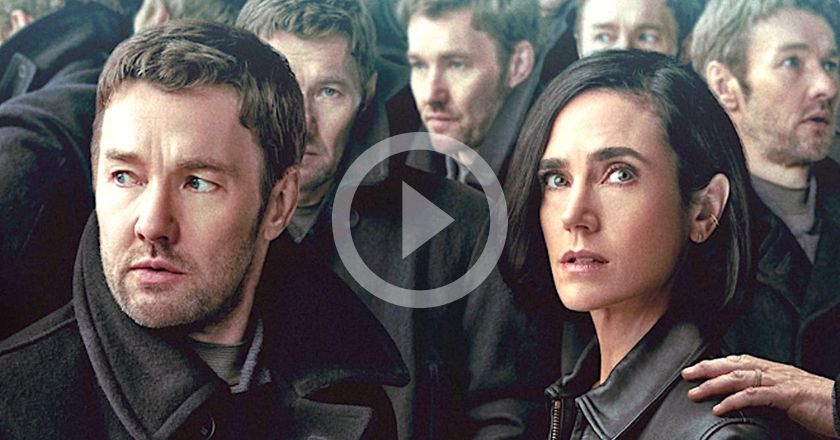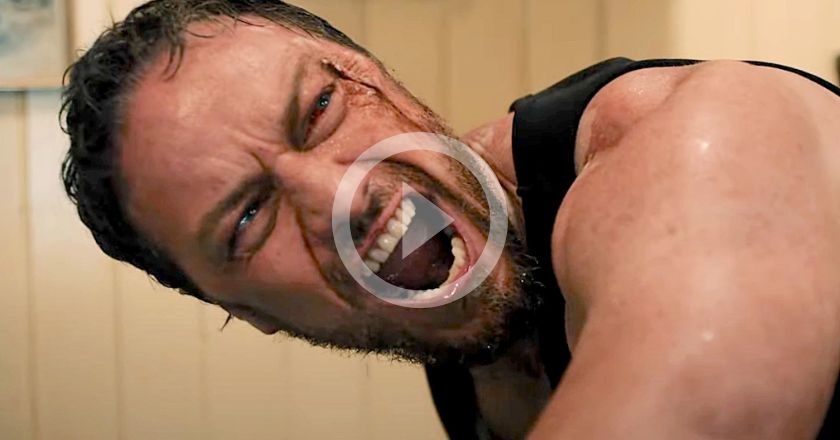
Right off the bat, Sixty Minutes to Midnight naturally (and unavoidably) draws comparisons with the classic Arnold Schwarzenegger film The Running Man. This is definitely not a bad thing, as Arnie was untouchable in that era, and society lapped up the cynical socio-political commentaries and themes that such a film explored. In Sixty Minutes to Midnight, there is no hulking, spandex-clad Austrian war-machine named Ben Richards, but we are instead served up the antithetic Jack Darcy (Robert Nolan), a gnarled yet likeable Vietnam vet who spends his days working construction and his nights swilling heartily from beer and whiskey bottles. Directed by Neil Mackay (Skeleton Lake), the film defies its low budget, for the most part, and offers up a gritty and rather entertaining version of a macabre and sneeringly pessimistic societal concept.
It is New Year’s Eve and the year is 1999. Jack, after a long day of work and several chugs of bourbon, finds himself awoken from his snooze/blackout to the jarring sound of his TV being hijacked. Flashed up on the screen is a cheesy-grinned game show host, and he’s staring right into Jack’s leathered and worn soul. He mockingly advises Mr. Darcy of his predicament: an endless wave of increasingly savage and skilled assassins are on their way to his house to kill him, adding that if he should somehow manage to survive this gripping ordeal– there’s a cool million dollars awaiting him. It is 11.00pm, and Jack has 60 minutes to navigate.
The host treats Jack to a grisly recording of the failed attempts of the previous contestant, and then he smirks and facetiously wishes him luck. After all, what sane person isn’t motivated by a “here’s how the last guy in your situation died” video? What stands in favour for Jack is the fact that he’s something of a survivalist ““ he has a proper bomb bunker stocked with plant life and a cache of sophisticated and varied weaponry, coupled with the fact that he’s a war veteran and is on his home turf. Working against these useful benefits: Jack is drunk and entirely confused by the reality of his situation. Nevertheless, he soon learns that his situation is very real and extremely dangerous.

Newcomer writer Terry McDonald slashes the costs ““ and ramps up the claustrophobia ““ by maintaining the majority of the ensuing firefights in and around Jack’s home and yard. As a viewer, you can feel yourself squishing in tighter as the assassins crash and bang their way into the house to kill our boy. Oftentimes, forced barriers and limitations on creators bring out the very best in them, and it is fair to say that Sixty Minutes to Midnight feels a bigger movie than it actually is due to the way in which this team circumnavigate their limitations. Crucially, where the film does not skimp is in the gunfire and bullet holes, with one particularly drawn out engagement creating a genuinely uncomfortable and alarming feeling – yes, proper tension.
What works against the film is that, despite its big idea and the many interesting questions such a concept creates, it is short (albeit probably unavoidable, due to budgetary confines). In turn, it must limit its scope and focus to the absolute bones of the story, which resultantly becomes slightly repetitive. The ambiguous ending, whilst intentional, did not quite do enough for me either.
Ultimately, there’s a lot more good than bad on offer here. I recommend you give Sixty Minutes to Midnight a watch; the questions it does answer are satisfying enough to overcome the ones that it does not.
THE REEL SCORE: 6/10







